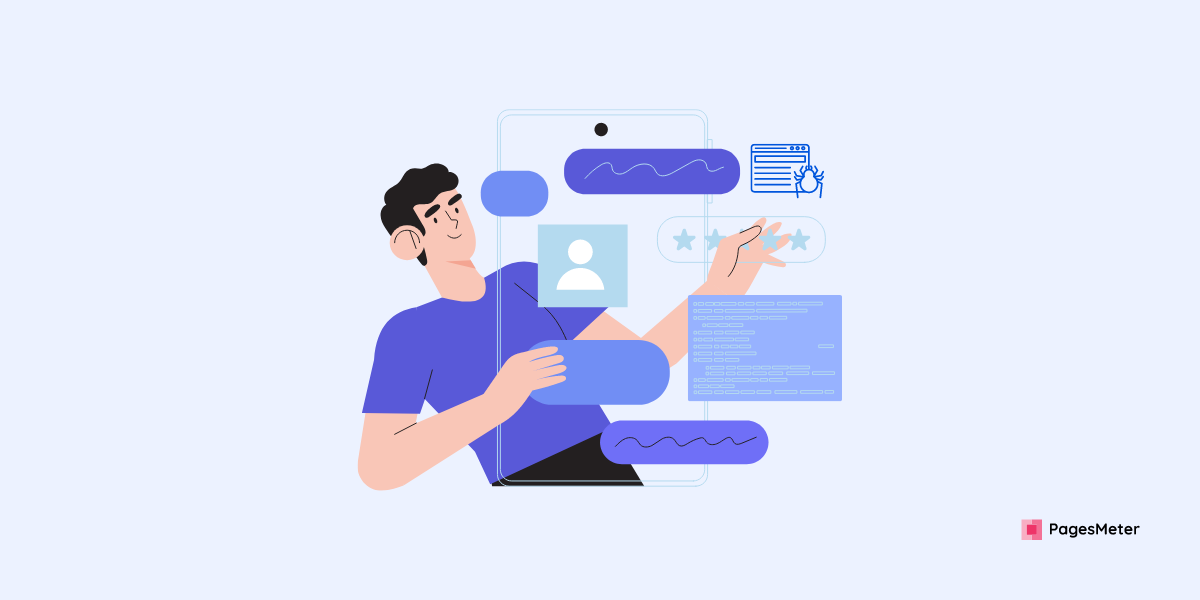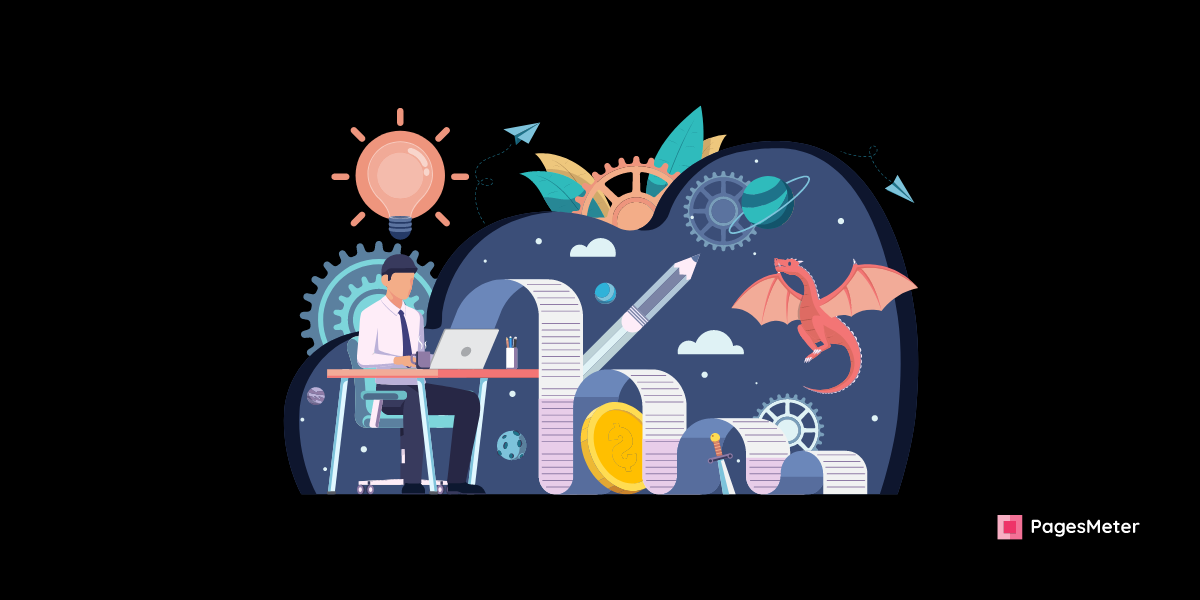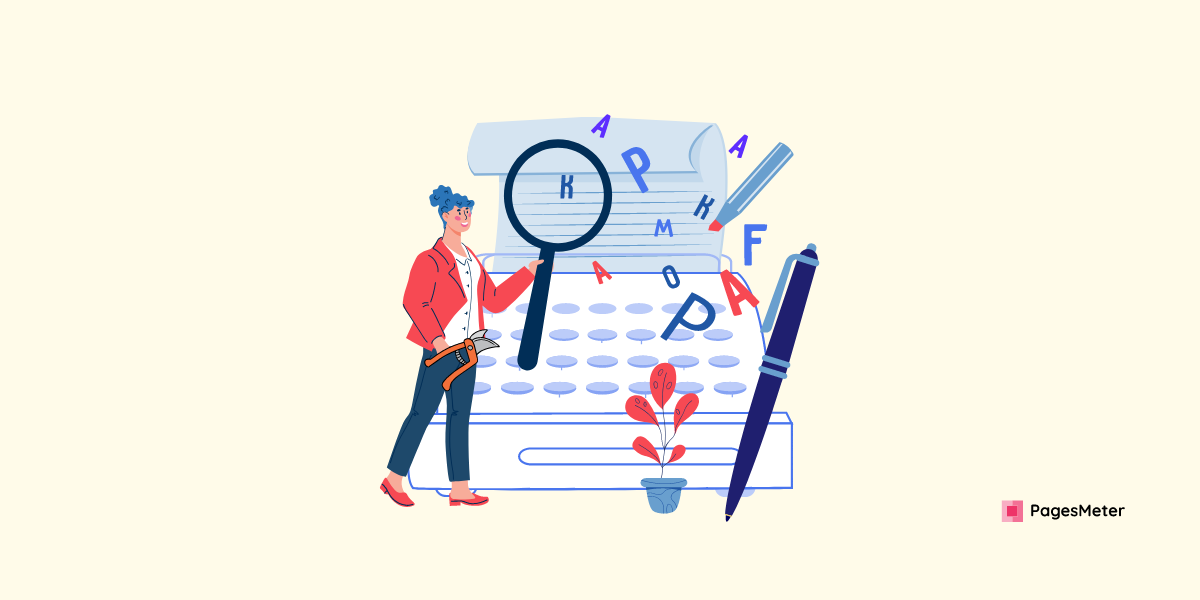- Home /
- Academy /
- Content & SEO Processes /
- How to Avoid Crawler Traps - A Beginner's Guide
How to Avoid Crawler Traps - A Beginner's Guide

Crawler traps commonly referred to as "spider traps," can negatively impact your SEO efforts by wasting crawl money and producing identical material. A structural flaw on a website that causes crawlers to discover an almost limitless number of unrelated URLs is referred to as a "crawler trap."
Make sure your website's technological base is up to par and that you are utilizing appropriate tools that can swiftly detect them if you want to prevent creating crawler traps.
What are crawler traps?
In SEO, "crawler traps" are structural problems that make it difficult for crawlers to identify relevant URLs on a website. Theoretically, crawlers could become trapped in a certain area of a website and never complete the crawl of these useless URLs. As a result, we refer to it as a "crawl" trap.
Sometimes "spider traps" are used to refer to crawler traps. The phrase "spider traps" refers to a structural problem with your website. The spider is unable to crawl since these traps produce endless URLs. As a result, the spider gets caught in these traps and is prevented from accessing the valuable areas of your website. When crawling a website, the search engine has a set number of pages it is willing to explore, which is referred to as a crawl budget. Crawl expenditure is lost since crawl traps direct search engine bots to pages with no SEO significance rather than the crucial pages.
If search engines never crawl the intended page and the site's position never gains from optimization, the time and money invested in building SEO are utterly useless.
Duplicate content problems can also be brought on by crawler traps. After running into a crawler trap, a large number of low-quality pages are indexable and available to visitors. Sites can fix their concerns with duplicate content on search engines by fixing traps.
What are the issues with crawler traps?
Spider traps may hinder the discovery of significant new pages and modifications and interfere with a website's quality and structure.
1. Crawl Budget issues
Google allows a crawl budget for every webpage. The number of requests that Google is ready to make to your website is known as a crawl budget (note: this is not the same as the number of pages!). If your crawl budget is being "wasted" on irrelevant sites, there may not be enough money left to quickly find fresh, engaging content and learn about recent site modifications. The majority of spider traps are detectable by Googlebot. When a spider trap is found, Google will stop crawling it and reduce the frequency at which certain pages are crawled. However, it can take Google some time to find a crawl trap, and even after that, less money is still being wasted on the spider trap.
2. Quality issues
The majority of crawler traps use endless repetitions of the same page (s). The majority of the pages mirror one another. Duplicate content problems result from this. A website with duplicate material is of poor quality. Pages with duplicate content can be found and filtered out by Googlebot. However, this procedure requires time and is not perfect. Even 0.00001 percent of definitive pages not being detected by Google results in major problems.
How do I identify and fix the common crawler traps?
The majority of crawler traps are like this. We shall describe how to recognize and correct each crawler trap.
- Subdomain redirect trap using https
- Refinery trap
- Never-ending URL trap
- Time trap
- The trap of endless redirection
- URL trap for sessions
Subdomain redirect trap using https
The most frequent crawler trap we encounter is this one. Every page of a website's old, "non-secured" version is forwarded to the secured version of the homepage when the site is running over a secure https connection.
The redirection's potential problem
Because search engine spiders like Googlebot never quite figure out how to redirect the old non-secured pages, this redirect has an issue. The URL http://www.example.com/page1 in the aforementioned example needs to have been changed to https://www.example.com/page1. Instead, the homepage is reached. The majority of crawlers will recognize this as a bad redirect. Instead of being updated to the new location, the old page is marked as a soft 404. Googlebot will keep attempting to crawl this page, costing your website a valuable crawl budget.
When a request for example.com/page1 is redirected to www.example.com/, the identical problem arises. Keep in mind that there is no "www" in the first request.
How to spot the subdomain redirect trap with https
It is simple to manually find this issue. But this is the kind of problem that comes as a surprise. You should verify the correct redirect after every server maintenance, CMS upgrade, or server update. For your https website, check the server logs for http requests and set a crawler filter. By manually converting https:// to http:// on your website, you might also confirm this. This crawl trap is designed to be discovered by the MarketingTracer on-page SEO crawler. When we identify this problem, we will let you know about inaccurate redirects.
The https / subdomain redirect trap and how to escape it
Your web server's/cms configuration error is the cause of this problem. You should modify your webserver setup or your content management system (CMS) to include the request Uri to your redirect string depending on "what generates the redirect."
Refinery trap
Many URLs can be produced using the product and sorting filters. For instance, sorting by popularity, price, and size (s, m, l, xl, XXL) and color (8 colors) will result in 384 duplicate pages of content (22268). Now multiply this by each category in your business as well as any additional filters you might be using. The majority of the time, we will urge you to refrain from utilizing the query parameter (?sort=price) in your URLs. However, sorting and filtering are essential on a buying website. Because of this, we must approach this problem somewhat differently.
You are almost likely susceptible to the filter trap if your site employs filters. Google will continue to attempt to crawl all of your filtered pages even if you add no index tags, nofollow links, or canonical tags to your sites.
The filter trap's drawback is
Pages aren't always displayed to visitors because filtering is typically done using javascript via an ajax call. However, search engines like Google are more than capable of detecting these filters.
Pages aren't always displayed to visitors because filtering is typically done using javascript via an ajax call. However, search engines like Google are more than capable of detecting these filters.
How to recognize a filter trap
You are almost likely susceptible to the filter trap if your site employs filters. The question is not if or not, but rather to what extent. The strongest defense against the filter trap is to disallow Google's filter results. The 'proper' destination for your store/category/product page should first be added as a canonical URL to your shop page. Then, add the filters as follows to your robots.txt file.
Never-ending URL trap
A relative link to the incorrect directory level results in the never-ending URL trap. You link to "page1" rather than "/page1" (not the slash in front of the first link).
Repeatedly clicking the link will navigate you to
The issue with the URL trap that never ends
The never-ending URL trap produced an endless number of URLs very rapidly. The never-ending URL trap is difficult to spot because Google hardly ever displays it in the site command. Google continues to make slow attempts to crawl the never-ending URLs.
The never-ending URL trap: How to avoid it
It can be challenging to manually find the never-ending URL trap. To find the little '/' omission in your link, you will need to look at the page's source code. This crawl trap is designed to be discovered by the MarketingTracer on-page SEO crawler. Simply look up your page in our crawl index and sort by URL. You'll be able to spot the error right away. After that, examine the page to see all of the links leading to it and correct them.
How to get out of the endless URL trap
Fixing the never-ending URL trap is simple. Find the relative connection, then switch it out with an absolute link (replace Page 1 with Page 1)
Time trap
The pages in your calendar plugin can be created indefinitely in the future. The calendar trap is another name for the time trap.
The difficulty of the time trap
The time trap produces an infinite number of blank pages. Although Google is quite adept at escaping the time trap, it takes some time for Google to pick up on this for your website. In the interim, Google will crawl a huge number of low-quality pages.
How to recognize a time trap
This issue is a little more difficult to find manually. You may see the indexed pages of your calendar by using the site command (site:www.example.com/calendar). Google will rapidly delete all unrelated calendar pages from the index once it has identified the time trap, making the site command worthless. Only a manual examination of your calendar plugin will reveal this danger. Check your settings first (are there options to avoid the time trap like limiting the number of months into the future)? If not, see if the distant future calendar pages provide robot instructions (like )
Fixing the time trap
Given that calendar software typically comes as a plugin, fixing the time trap can be challenging. You must disable calendar pages from indexing in your robots.txt file if the plugin's defenses against the time trap are insufficient.
- Future page counts should be set at a manageable number.
- No, following the links won't solve the problem.
- In your robots.txt file, exclude the calendar pages.
The drawback of the endless redirect trap
Google is aware of infinite redirects and will halt its crawling once a loop is found. There are still 2 problems with endless redirects. 1. They drain your budget for crawling. 2. Internal links to endless redirects are a bad sign.
How to recognize the endless reroute trap
Your browser will display a "redirect loop" error for endless redirection. If infinite redirects are hidden deep within your website, it is nearly impossible to find them. This crawl trap is designed to be discovered by the MarketingTracer on-page SEO crawler. To see these redirect loops, use the redirect filter.
Fixing the endless redirect trap
The endless redirect cycle is simple to fix. All you need to do is reroute the page to the appropriate page.
Concerning the session URL trap
Sessions are used by most frameworks. Visitor data is only stored for this visit throughout sessions. Typically, each session receives a distinct id (12345abcde for example). Cookies are often where session data is kept. The session id may be added to the URL if, for whatever reason, such as a server configuration error, the session data is not stored in a cookie. Every time a crawler visits, it counts as a "new visit" and receives a unique session id. When the same URL is crawled twice, it generates two separate session ids and URLs. There will be an explosion of URLs because every time a crawler scans a website, all the links with the new session id will appear to be new pages.
Identifying the session URL trap
The session URL trap is simple to recognize. Simply go to your website, turn off cookies, then select a few links. You are susceptible to the session URL trap if the URL contains a session id. This crawl trap is designed to be discovered by the MarketingTracer on-page SEO crawler. To see all the URLs containing session ids, simply visit our crawl index and select the "session" filter.
Fixing the session URL trap
The session trap is comparatively simple to fix. Session ids in the URL are often disabled by a setting in your CMS. As an alternative, you must modify your web server.
What are the best practices for crawler traps?
Recommended practices for avoiding crawler traps: In terms of crawler traps, prevention is preferable to treatment. Crawler traps typically result from an error in technical design. Instead of attempting to hide the problem, fix the design mistake.
- In your robots.txt file, prevent duplicate pages.
- A proper canonical URL will stop duplicate material, however, it won't address crawl budget problems.
- Links with nofollow on them prevent PageRank from being passed on. It doesn't stop the use of crawler traps.
How does the crawler trap impact your SEO?
Spider traps have one common effect on your website, although coming from many technical and non-technical concerns; they make it difficult for crawlers to examine your site. Your search engine visibility consequently declines, which has an impact on your ranking. Other detrimental effects include;
- Loss of quality in your ranking as determined by Google algorithms
- Affect the original page's PageRank when spider traps produce nearly identical pages
- Spending a crawl budget on unnecessary, nearly identical pages takes up search bots' time.
Conclusion
Finally, theoretically, a "nice" spider is far less likely to get caught in a crawler if it simply requests documents from hosts once every few seconds and alternates between hosts. To tell bots to avoid the crawler trap once they've been recognized, websites can also set up robot.txt files, however, this doesn't guarantee a crawler won't be harmed.
Crawler traps should be found and fixed to support other SEO-related site ranking and relevance-enhancing strategies. Use this manual to locate, dislodge, and avoid spider traps. They all happen for different causes, but they all together have an effect that hinders your website's success.
Start using PagesMeter now!
With PagesMeter, you have everything you need for better website speed monitoring, all in one place.
- Free Sign Up
- No credit card required

Content optimization refers to updating your content (text, images, links, code, and other elements) to help search engine algorithms rank your web pages higher.
Rank tracking is the practice of monitoring the rankings that your sites hold in search results for the search terms that interest you. A program that does rank tracking is called a rank tracker.

Content pruning is the process of taking out the content from the website that has very less value to the business or its clients.
Uncover your website’s SEO potential.
PagesMeter is a single tool that offers everything you need to monitor your website's speed.